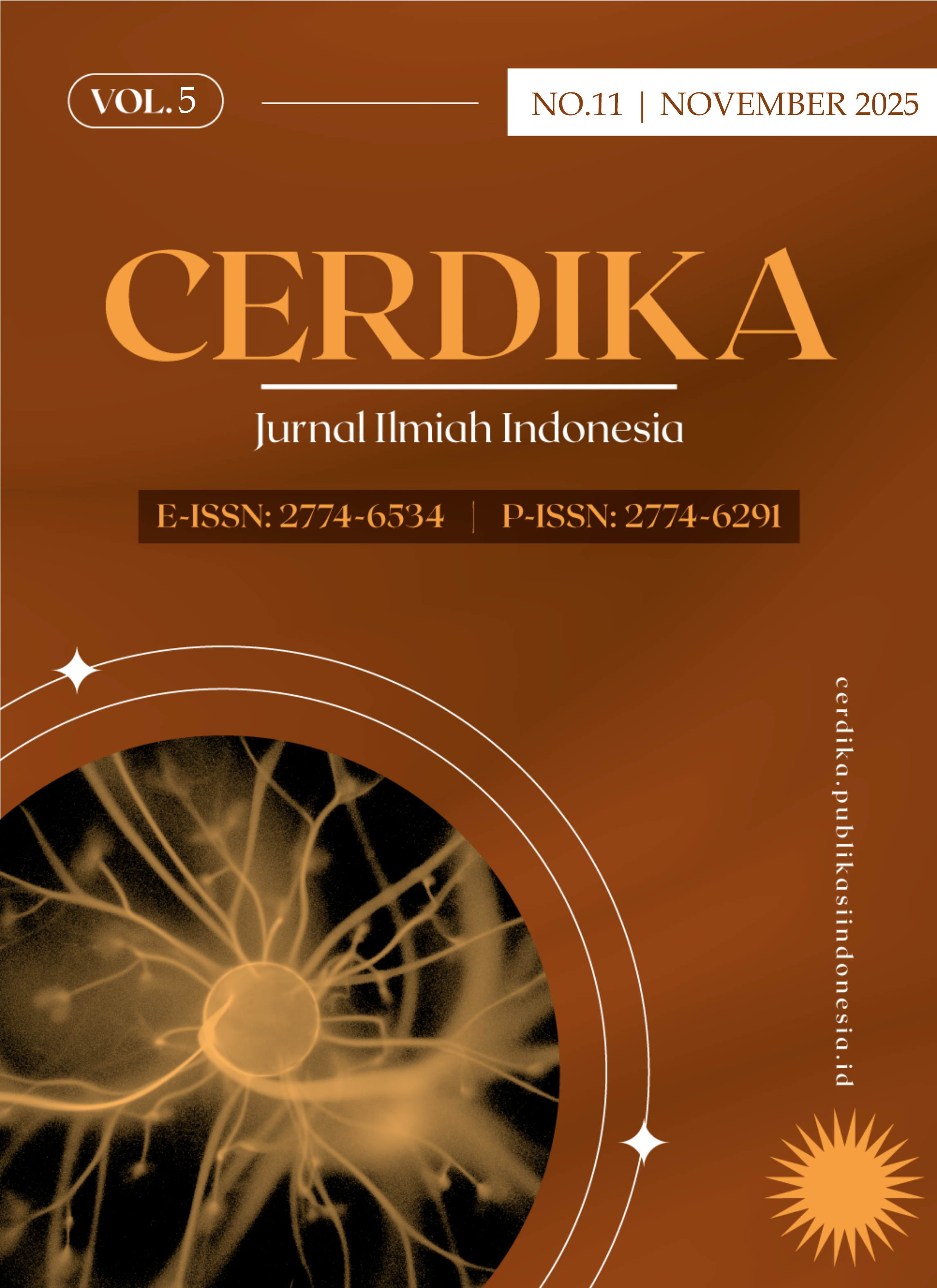Initial Stabilization Strategies for a Newborn with Larsen Syndrome and Meconium Aspiration Syndrome in a Peripheral Hospital
DOI:
https://doi.org/10.59141/cerdika.v5i11.2751Keywords:
Larsen syndrome, Congenital joint dislocation, Neonatal meconium aspirationAbstract
Larsen syndrome is a rare congenital skeletal dysplasia characterized by multiple joint dislocations and distinctive craniofacial features, which can complicate neonatal airway management. We report a term female neonate born at 40 weeks of gestation, weighing 2200 grams, delivered spontaneously in a peripheral facility with thick meconium-stained amniotic fluid. The infant did not cry at birth and exhibited severe respiratory depression (Apgar scores 3–4–5). Initial resuscitation, including airway clearance and positive pressure ventilation without a self-inflating bag, was performed to achieve effective lung aeration, resulting in gradual improvement in oxygen saturation from 93% to 100%. Clinical examination revealed congenital knee dislocation and cephalhematoma, while anthropometric assessment indicated intrauterine growth restriction. Chest auscultation demonstrated no adventitious sounds despite persistent tachypnea. This case highlights the complexity of neonatal stabilization when meconium aspiration syndrome coexists with syndromic skeletal anomalies. In resource-limited settings, structured resuscitation protocols and careful handling of the airway and limbs are essential to optimize outcomes and prevent further injury.
Downloads
Published
How to Cite
Issue
Section
License
Copyright (c) 2025 Ririn Wahyuningtyastutik, Intan Aliyatul Ummah, Uwais Al Qarany, IGNB Andhika Pramana

This work is licensed under a Creative Commons Attribution-ShareAlike 4.0 International License.







